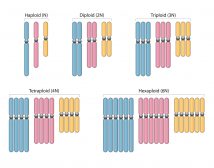Definition
noun
A biogeographic realm that includes the Indian subcontinent, Southeast Asia, and southern China
Supplement
Biogeographic realms are large spatial regions of the Earth’s land surface. Studying biogeographic realms leads to insight especially on biodiversity. It provides understanding on the extent of biodiversity and the factors that affect it. At present, there are about eight realms recognized by the World Wildlife Fund and they are divided according to their ecosystems sharing similar biological evolutionary history and distributional patterns of terrestrial organisms. The eight biogeographic realms are Nearctic realm, Palaearctic realm, Neotropical realm, Afrotropic realm, Indomalayan realm, Australasia realm, Oceanian realm, and Antarctic realm.
The Indomalayan realm (also referred to as the Oriental realm) is about 7.5 million square kilometres. It includes the Indian subcontinent, Southeast Asia, and southern China. Thus, it includes regions such as Afghanistan through the Indian subcontinent, lowland southern China, Indonesia, Philippines, lowland Taiwan, and Japan’s Ryukyu Islands.1 The World Wildlife Fund suggests three major bioregions that comprise the Indomalayan realm. These are (1) the Indian subcontinent bioregion, (2) the Indochina bioregion, and (3) the Sunda shelf and the ecological regions of the Philippines.
Synonym(s):
- Oriental realm
- Indomalayan ecozone
See also:
Reference(s):
1 Indomalayan realm. Retrieved from ://en.wikipedia.org/wiki/Indomalayan-realm.







